 Approximately 14 years ago, I was a young and eager executive director of a non-profit organization in Elgin, Illinois. While I had already worked in a number of different capacities in the non-profit sector, it was the first time I had held the job of “executive director.” Thinking back to that time in my life is where I pull my inspiration for the May 2014 Nonprofit Blog Carnival.
Approximately 14 years ago, I was a young and eager executive director of a non-profit organization in Elgin, Illinois. While I had already worked in a number of different capacities in the non-profit sector, it was the first time I had held the job of “executive director.” Thinking back to that time in my life is where I pull my inspiration for the May 2014 Nonprofit Blog Carnival.
As a new executive director, everything was new and there were days I found my head spinning, especially when I thought about which metrics and indicators I needed to watch with regard to my agency’s health.
However, I very clearly remember the day when all of that stopped. It happened after a Board Development committee meeting, and one of my board members pulled me aside. He asked me how things were going.
We talked about the organization’s health and how I knew what I thought I knew. It was at that moment he decided to play Oprah and pointed me in the direction of the following two books written by Frederick Reichheld:
- The Loyalty Effect: The Hidden Force Behind Growth, Profits, and Lasting Value
- Loyalty Rules: How Today’s Leaders Build Lasting Relationships
Just to give you a small taste of what these two books are all about, here is a short quote from chapter one of “The Loyalty Effect“:
“. . . businesses that concentrate on finding and keeping good customers, productive employees, and supportive investors continue to generate superior results. Loyalty is by no means dead. It remains one of the great engines of business success. In fact, the principles of loyalty — and the business strategy we call loyalty-based management — are alive and well at the heart of every company with an enduring record of high productivity, solid profits, and steady expansion.”
Not to be too dramatic, but that informal book club assignment changed my point of view on all things pertaining to the non-profit sector. After reading those books, my personal non-profit management litmus test usually centered around this simple question:
“What would Betrys do?”
As you’ve probably guessed, Betrys is our 13-year-old Welch Terrier who is featured in all of the pictures you see in this blog post.
This brings me to the May 2014 Nonprofit Blog Carnival . . .
With all of the talk about donor loyalty in recent years, I thought dedicating an entire Nonprofit Blog Carnival theme to the broader idea of LOYALTY might be fun.
So, calling all bloggers! Please write and submit a post this month focused on how non-profit organizations can and should be building loyalty among any of the following stakeholder groups:
- donors
- employees
- volunteers
- board members
- social media networks
If you can identify another type of stakeholder group with which you believe a non-profit organization needs to build loyalty, then please feel free to blog about that, too. This is intentionally a broad topic. Feel free to get creative. All I ask is that you include in your blog post strategic or tactical suggestions on how to build loyalty so that our collective readership can walk away from our content with lots of new ideas.
To help get into the spirit, I will dedicate all of the content at DonorDreams blog in May 2014 to the idea of building loyalty.
 But wait . . . there is more!
But wait . . . there is more!
If you couldn’t tell from the title of this post, I am a dog lover. Is there anyone or anything in this world that embodies LOYALTY more than dogs?
At the end of the month, there will be difficult decisions made about which submissions get published and which ones end up on the cutting room floor. If you can incorporate some reference to the canine community in your Nonprofit Blog Carnival submission, then you will get bonus points. 🙂
So, I’m sure some of you are wondering what I mean.
A reference to the canine community could be as simple as working your dog (or someone else’s famous dog like Spuds MacKenzie, Snoopy or Lassie) into your post. It could be more complicated like the time when John Greco centered an entire organizational development blog post titled “Puppy Perspective” around his dogs.
Good luck and regardless of whether or not you get a dog into your post, please have some fun with this month’s carnival!
 How to submit your work for consideration?
How to submit your work for consideration?
You are welcome to write your blog post anytime during the month of May (or even submit a post you may have previously published); however, I must receive your submission by the end of the day on Monday, May 26, 2014:
How do you submit? Simply email the following information to nonprofitcarnival[at]gmail[dot]com:
- Your name
- The URL of your post
- A two of three sentence summary of your post
We will publish the May 2014 Nonprofit Blog Carnival on Wednesday, May 28, 2014 right here at DonorDreams blog.
Go visit April’s Nonprofit Blog Carnival
In April, the carnival was hosted by Nancy Schwartz at ” her blog — Getting Attention!” The theme was “The Work Behind Your Work: Your Methods and Wants for Nonprofit Blog Carnival“. She asked bloggers to consider the following questions:
- the methods and tools you use to stay focused, productive and happy on the job
- or the barrier that keeps you from getting there
If you’re interested in reading what some very smart and talented bloggers had to say about this Nonprofit Blog Carnival theme, click here.
 Miscellaneous details?
Miscellaneous details?
Click here to learn more about the Nonprofit Blog Carnival. If you want to view the archives, then you want to click here.
Do you want to become a “Friend of the Carnival” and receive email blasts twice a month with reminders about the Carnival? Click here if you want to receive those reminders.
In a tip of my hat to the Nonprofit Blog Carnival that I hosted last May, I leave you with this Dr. Seuss-inspired quotation to inspire your much anticipated submission:
“You’re on your own. And you know what you know. And YOU are the one who’ll decide where to go . . .”
I am very much looking forward to see what you decide to do and where you decide to take this month’s Nonprofit Blog Carnival.
Here’s to your health!
Erik Anderson
Founder & President, The Healthy Non-Profit LLC
www.thehealthynonprofit.com
erik@thehealthynonprofit.com
http://twitter.com/#!/eanderson847
http://www.facebook.com/eanderson847
http://www.linkedin.com/in/erikanderson847

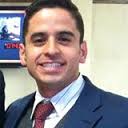 It happens every year. My partner and I get a phone call from Cindy, who is Ernie Gamino’s assistant, and she asks us to please schedule a year-end sit down meeting. Ernie is our Edward Jones financial advisor, and getting time in both of our calendars is a challenge. However, we found some time this past Saturday. I’m glad we did because I discovered that Ernie is a really good fundraising professional, who has never been trained as one or worked at a non-profit organization. We can all learn a lot from Ernie and his colleagues.
It happens every year. My partner and I get a phone call from Cindy, who is Ernie Gamino’s assistant, and she asks us to please schedule a year-end sit down meeting. Ernie is our Edward Jones financial advisor, and getting time in both of our calendars is a challenge. However, we found some time this past Saturday. I’m glad we did because I discovered that Ernie is a really good fundraising professional, who has never been trained as one or worked at a non-profit organization. We can all learn a lot from Ernie and his colleagues. I started the meeting off by growling at poor Ernie. I wanted to know why this annual meeting is necessary? Can’t he just go about doing his job and call me when he needs to get permission to do something with my investment portfolio.
I started the meeting off by growling at poor Ernie. I wanted to know why this annual meeting is necessary? Can’t he just go about doing his job and call me when he needs to get permission to do something with my investment portfolio.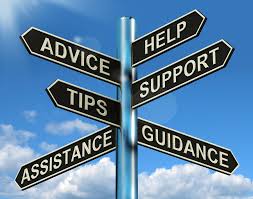 We talked about his Northern Illinois University (NIU) football team and the state of the BCS football system.
We talked about his Northern Illinois University (NIU) football team and the state of the BCS football system. Last week I was out with a friend for a glass of wine after work. We hadn’t seen each other in a few months, and we were catching up on lost time. “How are you? How is the new job? How’s your wife? Kids? Grandkids?” You know the drill. It was during this exchange that he dropped the bomb: “So, how is your partner? Ya know … the only time I ever see him is when he is asking me for a donation.”
Last week I was out with a friend for a glass of wine after work. We hadn’t seen each other in a few months, and we were catching up on lost time. “How are you? How is the new job? How’s your wife? Kids? Grandkids?” You know the drill. It was during this exchange that he dropped the bomb: “So, how is your partner? Ya know … the only time I ever see him is when he is asking me for a donation.”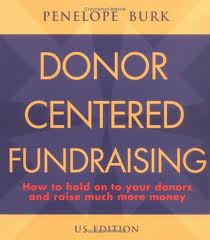
 These personal touches do not have to be all about your non-profit organization. I suggest that you train your volunteers to be less obvious. For example, both stewardship touches could be as simple as three minutes worth of messaging in the middle of a lunch meeting or after-work cocktail. It should feel organic and nature. It shouldn’t feel forced or contrived.
These personal touches do not have to be all about your non-profit organization. I suggest that you train your volunteers to be less obvious. For example, both stewardship touches could be as simple as three minutes worth of messaging in the middle of a lunch meeting or after-work cocktail. It should feel organic and nature. It shouldn’t feel forced or contrived.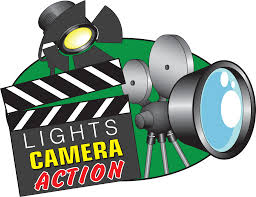 Last year I wrote a post titled “
Last year I wrote a post titled “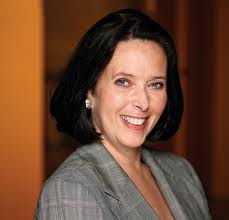
 Episode #239 . . .
Episode #239 . . . 



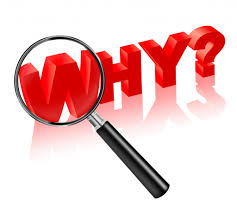







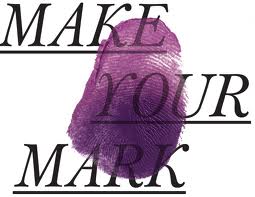 Welcome to O.D. Fridays at DonorDreams blog. Every Friday for the foreseeable future we will be looking more closely at a recent post from John Greco’s blog called “
Welcome to O.D. Fridays at DonorDreams blog. Every Friday for the foreseeable future we will be looking more closely at a recent post from John Greco’s blog called “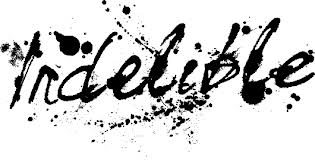 In that five-minute period of time as I paced the back of the banquet hall, there was a moment where I stopped listening and worrying about LaShaunda and I focused on what was happening in the room:
In that five-minute period of time as I paced the back of the banquet hall, there was a moment where I stopped listening and worrying about LaShaunda and I focused on what was happening in the room: